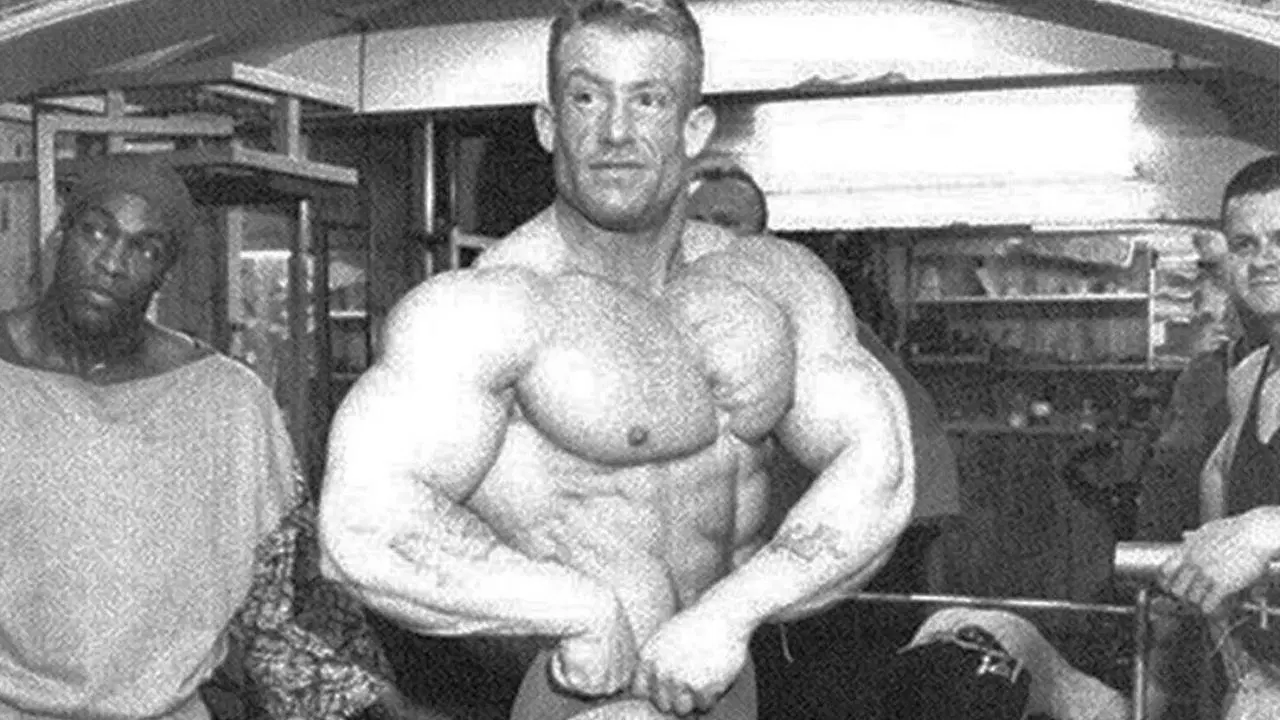Dorian Yates, one of bodybuilding’s most intense competitors, revolutionized training with his “low-volume, high-intensity” approach. Known as the “Blood and Guts” program, this routine uses High-Intensity Training (HIT) principles to push the muscles to their absolute limits. Through this method, Dorian achieved an incredible six Mr. Olympia titles, proving the power of his unique training philosophy.
Background of the Blood and Guts Program
Dorian Yates believed that muscle growth was best stimulated not by volume but by the intensity of each set. Instead of traditional high-volume routines, Dorian used a condensed, explosive format. Each exercise begins with a couple of warm-up sets, building up to a single, all-out set performed to failure. To maximize growth, he often included forced reps, negatives, and sometimes additional techniques that challenge the muscle past typical failure points.
Who Is This Program For?
Dorian Yates’ Blood and Guts is suitable for advanced lifters who are accustomed to intense workouts and have built a solid foundation in strength and form. Beginners may find it challenging due to the all-out sets and high-intensity techniques, so a background in strength training is ideal. This program is also popular among natural lifters seeking growth without the high-frequency and volume required by other routines.
The Blood and Guts Workout Split
Dorian’s split allows each muscle group ample recovery time, which is essential for HIT training:
| Day | Muscle Group | Notes |
|---|---|---|
| Monday | Back | Full intensity, focus on failure |
| Tuesday | Chest, Biceps | Forced reps on final set to failure |
| Wednesday | Rest | |
| Thursday | Shoulders, Triceps | Negative reps to push past failure |
| Friday | Legs | Intense quad, hamstring, calf work |
| Saturday | Rest | |
| Sunday | Rest |
Key Training Principles
- High Intensity, Low Volume
Dorian’s program is built on intensity, not volume. Instead of multiple sets, each exercise has only one primary working set after a warm-up, taken all the way to failure. - Going to Failure
Every working set is performed with maximum effort until absolute failure. Forcing out a few additional reps (with help from a partner, if possible) and incorporating negatives will amplify muscle breakdown. - Controlled Movements
Each rep is performed slowly and under control, emphasizing form and reducing momentum. This focus on contraction ensures the muscles are fully engaged, even with fewer reps. - Extended Recovery Time
The 3-day rest period allows for optimal recovery, giving the muscles a chance to grow without the interference of daily training. With Blood and Guts, recovery is as important as training.
Dorian Yates Blood and Guts Routine: Exercise Breakdown
Each day’s workout targets specific muscle groups. Here’s the workout plan, including a combination of warm-up and working sets taken to failure.
Monday: Back
- Pull-Ups – 2 warm-up sets, 1 working set to failure
- Barbell Rows – 2 warm-up sets, 1 working set to failure with forced reps
- Seated Cable Rows – 1 warm-up set, 1 working set to failure
- Underhand Lat Pulldowns – 1 working set to failure
- Deadlifts – 1 working set to failure
Tuesday: Chest and Biceps
- Incline Barbell Press – 2 warm-up sets, 1 working set to failure with forced reps
- Flat Dumbbell Press – 1 warm-up set, 1 working set to failure
- Chest Flyes – 1 working set to failure
- Barbell Curls – 2 warm-up sets, 1 working set to failure
- Concentration Curls – 1 working set to failure
Thursday: Shoulders and Triceps
- Seated Dumbbell Press – 2 warm-up sets, 1 working set to failure
- Lateral Raises – 1 warm-up set, 1 working set to failure
- Rear Delt Flyes – 1 working set to failure
- Tricep Pushdowns – 2 warm-up sets, 1 working set to failure
- Overhead Dumbbell Extension – 1 working set to failure
Friday: Legs
- Leg Extensions – 2 warm-up sets, 1 working set to failure
- Squats – 2 warm-up sets, 1 working set to failure
- Leg Press – 1 working set to failure
- Lying Leg Curls – 2 warm-up sets, 1 working set to failure
- Standing Calf Raise – 2 warm-up sets, 1 working set to failure
Tips for Success on the Blood and Guts Program
- Focus on Form: Control each movement. Maintaining strict form helps you fully engage the target muscles.
- Use a Training Partner: A spotter can help push past failure with forced reps or negatives, which are critical for success in this program.
- Prioritize Recovery: With HIT, your body needs more recovery time. Stick to the rest days and get adequate sleep for muscle growth.
- Nail Your Nutrition: Fuel your muscles with enough protein and calories to support recovery and muscle growth. Proper nutrition and rest make all the difference with this program.
- Consistency Over Everything: The Blood and Guts program is demanding, but consistent effort and intensity will yield significant results.
Benefits of the Blood and Guts Routine
- Intensity Drives Growth: The high-intensity, low-volume approach is ideal for muscle growth without excessive gym hours.
- Focused, Efficient Workouts: Fewer sets mean each one is highly intentional, creating a more efficient routine.
- Perfect for Natural Lifters: The recovery time and HIT approach make it suitable for natural bodybuilders who need extra rest days.
- Builds Mental Resilience: Training to failure demands mental toughness, helping you grow in discipline and strength both physically and mentally.
Is Blood and Guts Right for You?
This program is challenging, but it’s highly effective for lifters who want to prioritize intensity. If you’ve plateaued on volume-based programs or are looking for a structured, intense approach to muscle growth, Dorian Yates’ Blood and Guts may be your next move.
Experience a whole new level of training intensity, where each set counts and recovery is prioritized. It’s the routine that propelled Dorian Yates to bodybuilding greatness, proving that sometimes less is indeed more—if every set is performed with maximal effort.
Discover more from IncogNatty
Subscribe to get the latest posts sent to your email.









